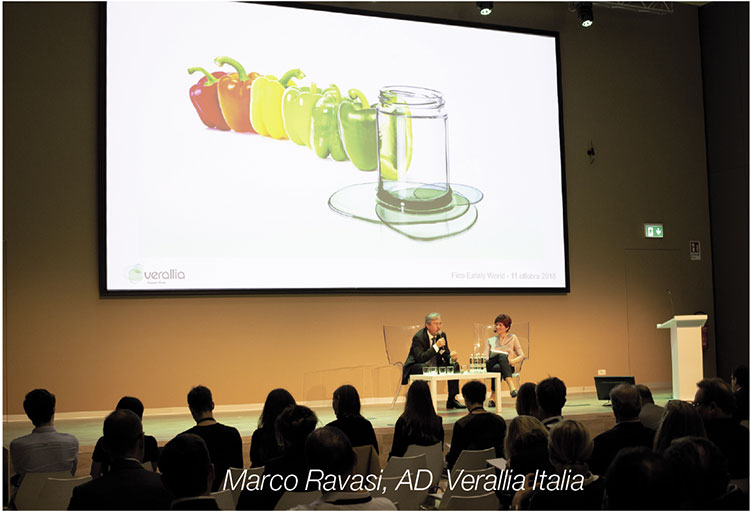Seeds of innovation in the agrifood supply chain
Sustainability, e-commerce and omnichannel: the food & beverage segment will necessarily have to make these three concepts their own to continue on the path of innovation. But take note: innovation must be increasingly shared among all the actors in the supply chain, in order to be able to provide adequate responses to the new needs of the planet and consumers. This the leitmotiv of the conference organized by the Verallia Group on October 17 at FICO Eataly World in Bologna. Milena Bernardi

Different and stimulating food for thought was offered by the conference “Disruptive Innovations in Food and Beverage. How consumer models, companies and distribution are changing” organized by Verallia, the world’s third largest producer of glass bottles and jars for F&B. On October 11, in Bologna, at Fico Eataly World, different sections of industry, distribution and scientific research compared notes on the subject.
Moderated by Cristina Alfieri (director of FOOD trade magazine), the event opened with a talk given by Marco Ravasi, CEO of Verallia Italia, who illustrated the main news concerning the company, including the maxi investment of 80 millions of euros in the production site of Villa Poma (Mantua), where by 2020 the current plant will be revamped and a new furnace installed, the eleventh among the group’s various Italian plants.
«For the past 30 years the glass food packaging sector has been growing with a regularity of + 1.5%, driven by greater attention to environmental impact and by the sensitivity of consumers towards more sustainable packaging» declared Ravasi.
«When it comes to us, every year we invest resources in research and development to reduce CO2 emissions as much as possible, increasing the average rate of recycled glass used in production as much as possible which, for darker colors, reaches over 80%».
From the academic world comes a broad vision on innovation involving five macro areas of the agrifood chain: production, distribution, converting, purchase and consumption. Matteo Vignoli, professor of Business Process Engineering at the University of Modena and Reggio Emilia and director of the international master “Food Innovation Program”, explained that «a tradition is an innovation that has been successful, but must be continually renewed , otherwise it dies. Better if it is shared with the different actors in the supply chain».
The “Seeds of Disruption” concept map developed in collaboration with IFTF (Institute for the Future) Palo Alto - proposes a model that overcomes the limits and reinterprets the global F&B sector, redefining the strategies with a view to greater efficiency and sustainability, but with a “resilient” approach, which contemplates a continuous dialogue between producers and distributors. According to Vignoli, networking will be the true innovation of the future (for further details, see the shoulder article).

Retail innovation in turn was the subject broached by Mario Gasbarrino, president and CEO of the supermarket chain Unes. He underlined how today more than ever the changes in the segment are dictated by the consumer. «A radical transformation is taking place in the general retail distribution world. E-commerce has overturned a paradigm: it is no longer necessary to go to the physical place to make purchases. Distribution would do well to take note, considering that in Italy food e-commerce does not chalk up large numbers because the supply is lacking». Gasbarrino, however, has repeatedly stressed that omnichannel will prevail in the future, just as time will be the first choice driver at the expense of distance.
Lastly Oscar Farinetti, founder of Eataly and owner of FICO Eataly World, in his speech compared innovation to a marvellous imperfection that needs to be managed and modified to become “almost” perfect. In his speech, Farinetti also spoke of courage, respect, optimism, a sense of the future, encouraging entrepreneurs to emerge from provincialism (thinking globally and acting locally) making themselves interpreters of what he called «the stratospheric power of our country».

















